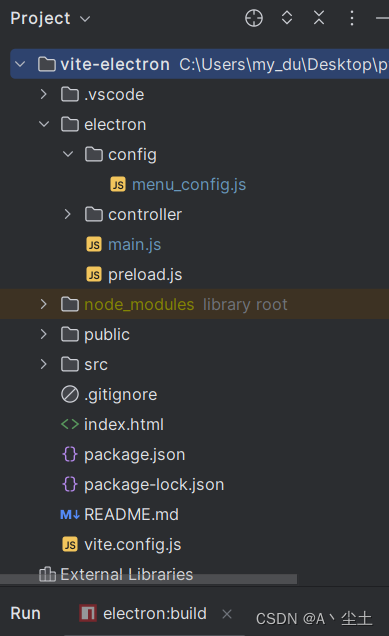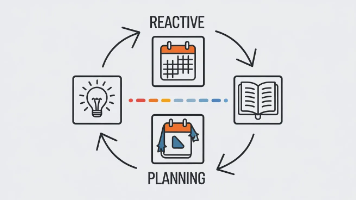Electron+vue3+vite+antd-vue,前端Vue开发桌面程序
当您想要创建一个具有良好用户界面的跨平台桌面应用程序时,可能会选择使用 Vue.js、Electron 和 Ant Design Vue。Vue.js 是一个流行的 JavaScript 框架,使用它可以轻松地创建动态的用户界面。Electron 是一个基于 Chromium 和 Node.js 的框架,用于构建跨平台桌面应用程序。Ant Design Vue 是一款基于 Vue.js 的 UI
当您想要创建一个具有良好用户界面的跨平台桌面应用程序时,可能会选择使用 Vue.js、Electron 和 Ant Design Vue。Vue.js 是一个流行的 JavaScript 框架,使用它可以轻松地创建动态的用户界面。Electron 是一个基于 Chromium 和 Node.js 的框架,用于构建跨平台桌面应用程序。Ant Design Vue 是一款基于 Vue.js 的 UI 组件库,提供了许多易于使用的 UI 组件。
在本文中,我们将介绍如何将 Vue.js、Electron 和 Ant Design Vue 结合在一起来构建一个跨平台桌面应用程序。我们将使用 Vite 作为我们的构建工具,它是一个快速的现代构建工具,用于构建 Web 应用程序和库。
首先,我们需要安装 Vue.js、Electron、Ant Design Vue 和 Vite。您可以使用以下命令安装它们:
npm install vue@next electron antd-vue@next vite --save-dev
接下来,我们需要创建一个新的 Vue.js 项目。您可以使用以下命令创建一个新的 Vue.js项目:
npm create vite@latest
这个命令将使用 Vite 模板创建一个新的 Vue.js 项目。现在,我们需要将这个项目转换为一个 Electron 应用程序。为此,我们需要使用 electron-builder 包。您可以使用以下命令安装它:
npm install electron-builder --save-dev
接下来,我们需要在项目的根目录下创建一个 main.js 文件,这是 Electron 应用程序的入口点。在 main.js 文件中,我们需要添加以下代码:
// Modules to control application life and create native browser window
const { app, BrowserWindow, Menu, globalShortcut } = require('electron')
const path = require('path')
const {menu} = require("./config/menu_config");
const {add} = require("./controller");
//这里的配置手动写的,也可以使用cross-env插件配置
const mode = process.env.API_ENV === "dev"
process.env["ELECTRON_DISABLE_SECURITY_WARNINGS"] = "true" //解决跨域会有警告,用这个之后就不显示警告了
/*隐藏electron创听的菜单栏*/
Menu.setApplicationMenu(null)
// try {
// require('electron-reloader')(module,{});
// } catch (_) {}
function createWindow() {
// Create the browser window.
const mainWindow = new BrowserWindow({
width: 800,
height: 600,
frame: true /*是否展示顶部导航 去掉关闭按钮 最大化最小化按钮*/ ,
webPreferences: {
preload: path.join(__dirname, 'preload.js'),
webSecurity: false //解决跨域
},
})
// and load the index.html of the app.
// mainWindow.loadFile('index.html') 修改成如下
mainWindow.loadURL(mode ? 'http://localhost:5173' : `file://${path.join(__dirname, '../dist', '/index.html')}`)
// Open the DevTools.
mainWindow.webContents.openDevTools()
Menu.setApplicationMenu(menu)
}
// This method will be called when Electron has finished
// initialization and is ready to create browser windows.
// Some APIs can only be used after this event occurs.
app.whenReady().then(() => {
createWindow()
app.on('activate', function() {
// On macOS it's common to re-create a window in the app when the
// dock icon is clicked and there are no other windows open.
if (BrowserWindow.getAllWindows().length === 0) createWindow()
})
})
// Quit when all windows are closed, except on macOS. There, it's common
// for applications and their menu bar to stay active until the user quits
// explicitly with Cmd + Q.
add(app,globalShortcut)
现在,我们需要在 package.json 文件中添加一些配置。在 "scripts" 中添加以下脚本:
"electron": "electron .",
"build": "vite build && electron-builder"
在 "build" 中,我们使用 vite build 构建应用程序,然后使用 electron-builder 打包应用程序。
现在,我们需要在 main.js 文件中添加以下代码:
const { app, BrowserWindow } = require('electron')
const path = require('path')
function createWindow () {
// 创建浏览器窗口
const win = new BrowserWindow({
width: 800,
height: 600,
webPreferences: {
nodeIntegration: true,
contextIsolation: false,
enableRemoteModule: true,
}
})
// 加载应用的 index.html
win.loadFile('index.html')
// 打开开发者工具
win.webContents.openDevTools()
}
// 当 Electron 完成初始化后创建浏览器窗口
app.whenReady().then(() => {
createWindow()
})
// 关闭所有窗口后退出应用程序
app.on('window-all-closed', () => {
if (process.platform !== 'darwin') {
app.quit()
}
})
// 在 macOS 上,单击 Dock 图标并且没有其他窗口打开时,重新创建一个窗口
app.on('activate', () => {
if (BrowserWindow.getAllWindows().length === 0) {
createWindow()
}
})
现在,我们需要在 package.json 文件修改成以下代码:
{
"name": "vite-project",
"private": true,
"version": "0.0.0",
"main": "electron/main.js",
"scripts": {
"dev": "vite",
"build": "vite build",
"preview": "vite preview",
"electron": "wait-on tcp:5173 && electron . ",
"electron:build": "cross-env API_ENV=prod npm run build && electron-builder",
"electron:serve": "cross-env API_ENV=dev concurrently -k \"npm run dev\" \"npm run electron\""
},
"dependencies": {
"@ant-design/icons-vue": "^6.1.0",
"ant-design-vue": "^3.2.20",
"cnpm": "^9.2.0",
"vite-plugin-vue-layouts": "^0.8.0",
"vue": "^3.2.47",
"vue-router": "^4.2.1"
},
"devDependencies": {
"@vitejs/plugin-vue": "^4.1.0",
"concurrently": "^8.0.1",
"cross-env": "^7.0.3",
"electron": "^24.3.1",
"electron-builder": "^23.6.0",
"unplugin-vue-components": "^0.24.1",
"vite": "^4.3.2",
"vite-plugin-pages": "^0.29.1",
"wait-on": "^7.0.1"
},
"build": {
"appId": "8a06282fb08c48eeacb15bfbe4d3a35b",
"productName": "ElectronApp",
"copyright": "Copyright © 2022 <项目名称>",
"mac": {
"category": "public.app-category.utilities"
},
"nsis": {
"oneClick": false,
"allowToChangeInstallationDirectory": true
},
"files": [
"dist/**/*",
"electron/**/*"
],
"directories": {
"buildResources": "assets",
"output": "dist_electron"
}
}
}
整体的项目结构如下
现在,我们可以编写我们的 Vue.js 应用程序。我们可以使用 Ant Design Vue 来创建用户界面。
在上面的代码中,我们使用了 Ant Design Vue 的 Layout 和 Menu 组件来创建一个具有导航栏和内容区域的布局。我们还定义了一个 App 组件,它将被用作我们的应用程序的根组件。
接下来,我们需要在 main.js 文件中添加以下代码来创建 Vue.js 实例,当然这里是全局引入,并没有按需引入,大家需要的可以根据自己的需要进行代码修改:
import { createApp } from 'vue'
import App from './App.vue'
import index from "./router";
import antd,{message} from 'ant-design-vue'
import 'ant-design-vue/dist/antd.css';
const app = createApp(App)
import * as Icons from '@ant-design/icons-vue'
// 循环使用全部全部图标
for (const i in Icons) {
// 全局注册一下组件
app.component(i, Icons[i])
}
app.config.globalProperties.$message = message;
app.use(antd).use(index).mount('#app')
这将构建应用程序,并将其打包为可执行文件。打包后的文件将位于 dist_electron 文件夹中。
在本文中,我们介绍了如何将 Vue.js、Electron 和 Ant Design Vue 结合在一起来构建一个跨平台桌面应用程序。我们使用了 Vite 作为我们的构建工具,并使用 Electron Builder 打包应用程序。我们还演示了如何使用 Ant Design Vue 来创建用户界面,并将其与 Vue.js 实例结合在一起。
本文中贴的代码不是完全代码,全拿下来并不能直接运行
完整版代码地址: vite-electron-antd
更多推荐
 已为社区贡献1条内容
已为社区贡献1条内容










所有评论(0)